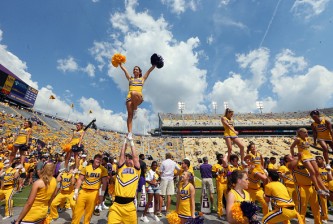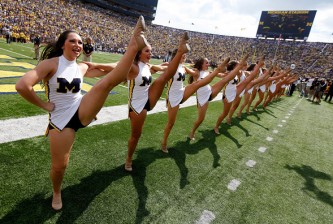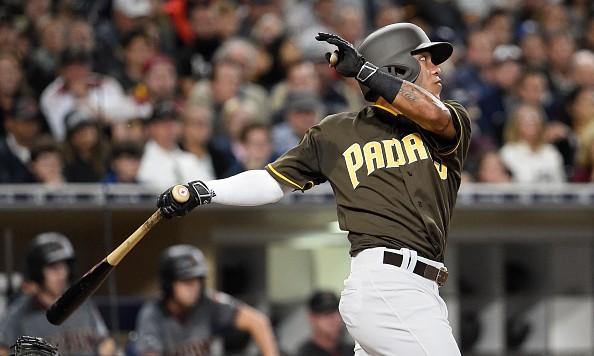MLB’s regular season is a marathon, not a sprint. A fast start doesn’t guarantee a career year and a slow start doesn’t mean a player is going to consistently struggle. Sometimes, all it takes is one pitch for a hitter to go on a hot streak. Knowing which hitters are hot can give you a big advantage when betting on baseball. If you’re looking to place wagers for the 2019 season, be sure to check out the MLB betting odds at 888 Sport US to get the most up to date odds available. Baseball betting has never been more popular, particularly with the new law changes in the US which have made sports betting legal in many states.
The following six hitters each had varying levels of expectations for the 2018 season, but they all have one thing in common: their year didn’t exactly get off to a fast start. They each used the All-Star break to take a breath, refocus, and at least somewhat change the perception of their season-long performance.
Which hitters are hoping the good vibes that came with a strong second half will follow them around all winter and tag along for the start of 2019?
Michael Conforto, New York Mets
After a career year (and All-Star campaign) in 2017 was cut short in August due to a not-so-fun-looking shoulder injury, Michael Conforto was a bit of a wild card for New York at the start of 2018. He was viewed by the former front office regime as a crucial piece to the Mets’ overall offense, and it was a huge lift when he returned to the lineup sooner than expected on April 5th against the Washington Nationals.
Starting his year with a home run off Stephen Strasburg also wasn’t too bad, but the rest of the first half wasn’t too fun.
His 15.3% walk rate prior to the All-Star break helped him post a 101 wRC+, but his .710 OPS and .150 ISO showed he wasn’t totally himself just yet through 346 plate appearances. That changed over his final 292 trips to the plate, as he slashed .274/.356/.539 with 17 homers and 52 RBI, which sussed out to a 143 wRC+.
This second-half surge led him to setting new single-season career highs in homers (28), runs scored (78), and RBI (82). He can thank a rise in BABIP (.266 to .315) for that, which was aided by an increase in line drives (18.7% to 20.5%) and hard-hit rate (33.5% to 38.4%).
Joey Gallo, Texas Rangers
Joey Gallo is generally known for two things: hitting mammoth dingers and striking out a ton. It was more of the same from a macro perspective in 2018, as he put together his second straight season of 40-plus home runs and a strikeout rate of at least 35.0%.
However, he wouldn’t have accomplished what he did in the power department without erasing what was a tough first half. Heading into the midsummer classic, Gallo was slashing just .187/.296/.443 through 365 plate appearances, good for a 91 wRC+. He did hit 22 homers, but his .256 ISO was tracking well behind his 2017 pace (.327).
That’s when he turned on the jets for his last 212 plate appearances — the left-handed slugger posted a 141 wRC+ and .353 ISO off the strength of a .239/.340/.592 triple slash. Gallo amped up his hard-hit rate (46.2% to 52.3%) while also lowering his extreme fly-ball rate (52.7% to 45.0%).
Furthermore, he loved the home cooking of Globe Life Park — the 25-year-old posted a .906 OPS and .340 ISO in Arlington and a .716 OPS and .245 ISO everywhere else in 2018.
Anthony Rizzo, Chicago Cubs
If there’s one thing Anthony Rizzo has been for the Cubs over the years, it’s consistently elite. Heading into this past season, he had tormented the top pitchers four straight years of 30-plus homers and three straight with 100-plus RBI, all while posting a wRC+ of at least 130.
Only one of those streaks continued (he drove in 101 runs), but it’s not like hitting 25 homers and finishing with a 125 wRC+ was a disappointment. A slow start is what prevented him from keeping all these streaks alive, though.
He owned a 101 wRC+ heading into the All-Star break, only to see that number jump to 157 in the second half. A noticeable difference was a change in BABIP, as that number went from .249 to .337. Rizzo’s batted-ball profile didn’t change much, but his hard contact rose nearly six percentage points between these two time periods.
The first baseman also set new single-season career-best marks in contact rate (85.1%), strikeout rate (12.0%), and swinging-strike rate (6.9%, nice). He did all that while maintaining a 10.5% walk rate, the sixth consecutive season it’s been in double digits.
Jackie Bradley Jr., Boston Red Sox
Despite his huge postseason hits, Jackie Bradley has generally been known more for his glove than his bat. While he did enjoy a breakout offensive season in 2016 (.267/.349/.486 with 26 homers, 87 RBI, and a 118 wRC+), his production has lagged since.
By looking at his overall statistics from 2018, things aren’t looking all that wonderful — his wRC+ was under 100 and his ISO decreased for the second straight year. However, he did steal a career-high 17 bases and posted career bests in soft-hit rate (10.0%) and hard-hit rate (41.1%).
As you might’ve guessed, his 2018 performance would’ve been a lot worse if it wasn’t for a second-half surge (118 wRC+ after a mark of 71 prior to the All-Star break).
While Bradley did improve his performance against fastballs (100 wRC+ in ’17, 146 in ’18), he struggled mightily against secondary pitches. His wRC+ against sliders (33), changeups (-6), and curveballs (27) were all rather terrible.
Jose Abreu, Chicago White Sox
The 2019 season is important for Jose Abreu, as it will be his last chance to make a good impression before heading into free agency. Despite his general consistency, it’ll already be tough for him to score that huge contract because he’ll be preparing for his age-33 campaign next winter. With that in mind, he’ll need to forget what he did in the first half this past year and focus on what he did in the second half.
After posting a .752 OPS, 101 wRC+, and .187 ISO prior to the All-Star break, he finished the year by lifting those numbers to .922, 149, and .265, respectively. It was helpful to see a huge rise in line-drive rate (19.5% to 26.2%) and hard-hit rate (34.5% to 47.6%), along with a drop in ground-ball rate (45.7% to 39.8%).
A season-long trend he should probably try to correct is his plate discipline. He posted a career-best 33.0% chase rate in 2017 but watched that rise back up to 37.2%. Meanwhile, his 65.9% swing rate on strikes in 2018 is a career-worst mark, and this is a number that’s decreased for the second straight year.
Randal Grichuk, Toronto Blue Jays
Randal Grichuk ended up having a very Randal Grichuk year in his first tour with the Blue Jays. His first half wasn’t the best (.206/.273/.427, 88 wRC+), but he rebounded quite nicely in order for his overall stats to land within his career norms (.280/.326/.569, 140 wRC+).
This should be something we’re used to by now. Grichuk has compiled 960 career plate appearances in the first half, which has yielded a .225/.282/.437 triple slash and 90 wRC+. Through 888 career second-half plate appearances, that line has improved to .272/.315/.549 with a 130 wRC+.
While he was equally effective against lefties (117 wRC+) and righties (114), he enjoyed hitting at the Rogers Centre (132 wRC+) more than being a visitor elsewhere (98).























